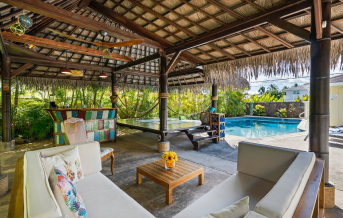
The Beauty of Ornamental Grasses in Indiana Landscapes
Ornamental Grasses for Shade-Loving Areas in Indiana
Shade-loving areas in Indiana can often pose a challenge for gardeners looking to add texture and movement to their landscapes. However, ornamental grasses can be a great solution to this problem. With their graceful and delicate foliage, these grasses can add a touch of elegance to any shady corner of your garden.
When considering ornamental grasses for shade-loving areas in Indiana, it is important to choose varieties that are well-suited to the climate and soil conditions of the region. Some excellent options include Japanese forest grass (Hakonechloa macra), northern sea oats (Chasmanthium latifolium), and tufted hair grass (Deschampsia cespitosa). These grasses are known for their ability to thrive in partially shaded conditions and can tolerate a wide range of soil types.
In addition to their adaptability, ornamental grasses also offer a range of colors and textures to add interest to your shade garden. From the vibrant golds and reds of Japanese forest grass, to the delicate seed heads of northern sea oats, these grasses can create eye-catching focal points and provide year-round visual interest. Whether you choose to plant them as a border, in mixed plantings, or as standalone features, ornamental grasses can transform your shady areas into stunning vistas. So why not take advantage of the beauty and versatility of ornamental grasses to enhance your Indiana landscape?
Adding Texture and Movement to Your Indiana Landscape with Ornamental Grasses
Ornamental grasses are a fantastic addition to any Indiana landscape, as they bring both texture and movement to your outdoor spaces. These grasses have a unique ability to sway in the breeze, adding a dynamic element to your garden or yard. Their graceful movements create a mesmerizing effect that can captivate anyone who sets foot in your outdoor oasis. Not only do ornamental grasses provide visual interest, but they also add a tactile element, as their feathery or plume-like seed heads can be soft to the touch. You can’t help but feel the urge to run your fingers through their delicate strands.
In terms of texture, ornamental grasses offer a wide variety of options. From fine, wispy grasses that create a soft, airy feel, to bold, thick grasses that provide a more substantial presence, there is a grass to suit every taste. The juxtaposition of different textures can create a visually striking landscape, with the grasses acting as the focal point. Combine the fine blades of fescue grass with the robust clumps of switchgrass, and you have a winning combination that adds depth and dimension to your outdoor space. With ornamental grasses, the possibilities are endless—allow your creativity to run wild as you experiment with different combinations and textures.
(Note: This section of the article does not include a conclusion)
Overcoming Common Challenges When Growing Ornamental Grasses in Indiana
One of the common challenges when growing ornamental grasses in Indiana is the lack of adequate sunlight in shady areas. Many gardeners often struggle with finding suitable grass varieties that can thrive and bring beauty to these shaded spaces. However, there are several options available that can overcome this challenge.
One approach is to choose shade-tolerant varieties such as Japanese forest grass (Hakonechloa macra) or northern sea oats (Chasmanthium latifolium). These grasses can tolerate partial shade and still provide a stunning display of foliage and texture to your landscape. Additionally, consider planting grasses in spots where they can receive the maximum amount of sunlight, like near the edges of tree canopies or under taller shrubs. This way, they can take advantage of the limited sun exposure and still thrive in your shade-loving areas.
Creating a Sustainable Indiana Landscape with Native
Native plants are a crucial component of creating a sustainable landscape in Indiana. These plants are well adapted to the local climate and soil conditions, making them more resilient and less reliant on artificial inputs such as fertilizers and pesticides. By incorporating native plants into your garden or yard, you can help conserve water, support local biodiversity, and reduce the need for chemical interventions.
In addition to their environmental benefits, native plants can also add beauty and interest to your Indiana landscape. From the vibrant blooms of coneflowers and black-eyed Susans to the delicate foliage of grasses and sedges, native plants come in a wide variety of colors, shapes, and textures. They can provide year-round interest, attracting pollinators and birds while creating a natural, harmonious look. So why not consider incorporating some native plants into your landscape? Not only will you be doing your part for the environment, but you’ll also be rewarded with a more sustainable and visually appealing outdoor space.
Can ornamental grasses thrive in shaded areas in Indiana?
Absolutely! There are several varieties of ornamental grasses that thrive in shade, such as Japanese forest grass and autumn moor grass. These grasses can add beauty and texture to your shaded landscape.
How do ornamental grasses add texture and movement to a landscape in Indiana?
Ornamental grasses have unique foliage and graceful, swaying stems that add texture and movement to a landscape. They can create a sense of flow and provide visual interest throughout the seasons.
What are some common challenges when growing ornamental grasses in Indiana?
One common challenge is ensuring proper drainage. Ornamental grasses generally prefer well-drained soil, so it’s important to amend the soil if needed. Another challenge is selecting the right grasses for your specific location and climate. It’s best to choose native grasses that are well-suited to Indiana’s climate and soil conditions.
How can I create a sustainable landscape in Indiana using native grasses?
Native grasses are excellent choices for a sustainable landscape in Indiana. They are adapted to the local climate and require less water and maintenance compared to non-native species. By incorporating native grasses into your landscape, you can conserve water, support local wildlife, and reduce the need for chemicals and fertilizers.
Leave a Reply